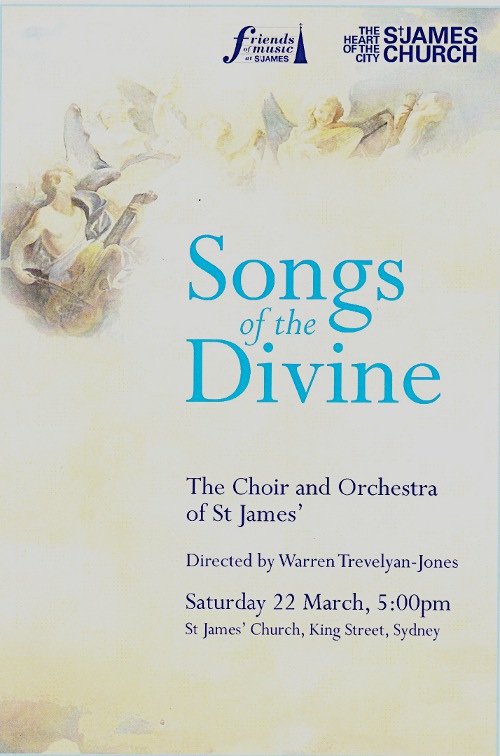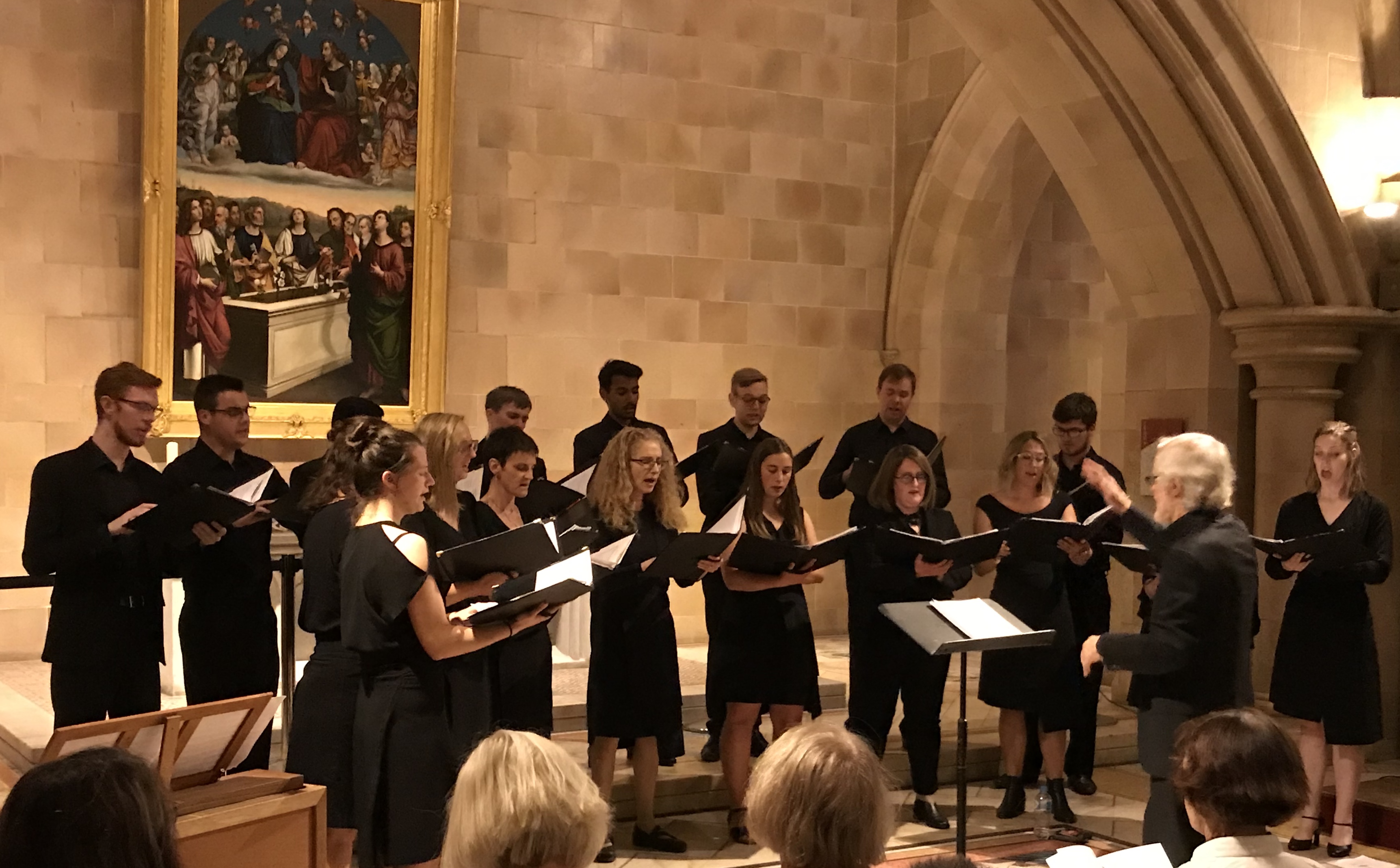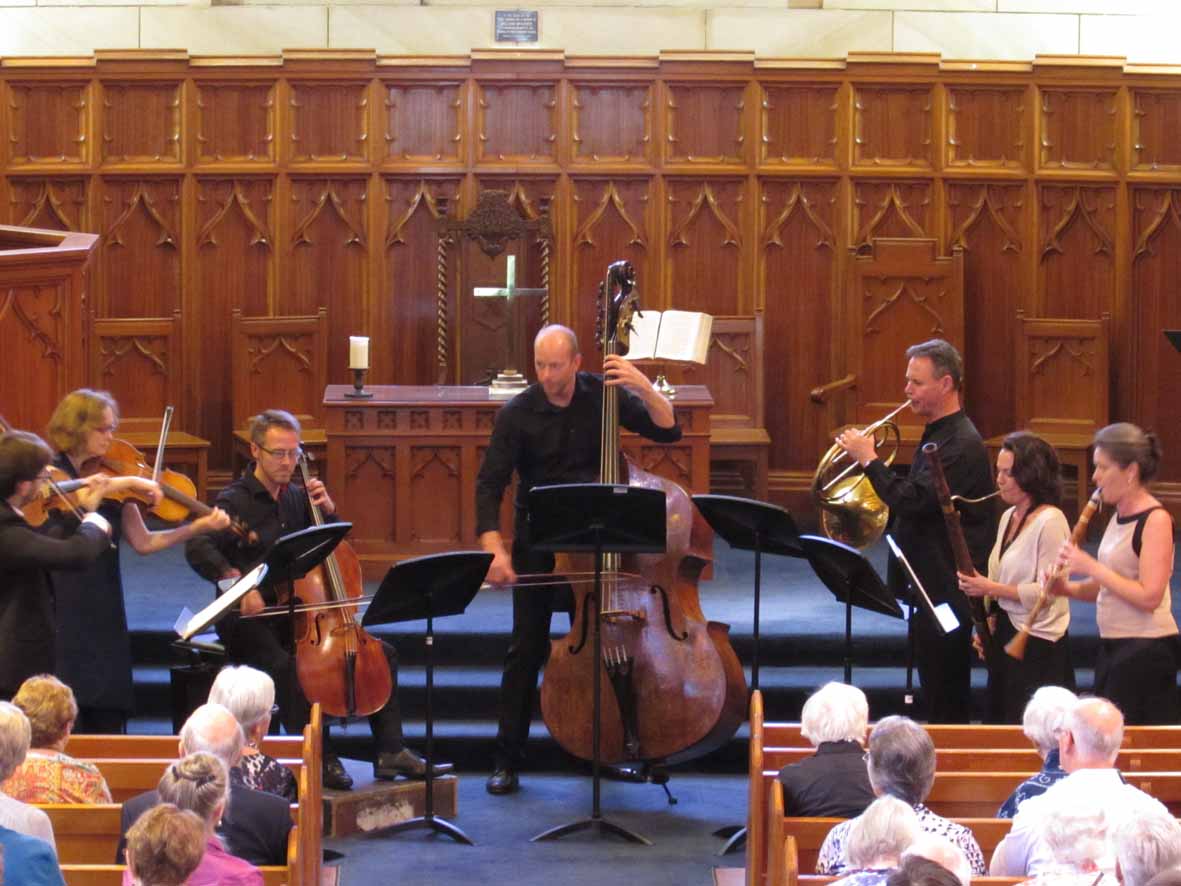Concert Review: Songs Of The Divine, The Choir of St James’ King Street

The Choir and Orchestra of St James
St James, King Street, Sydney
22 March 2014
Songs of the Divine – Baroque Masterpieces
For the first concert in their 2014 series, the choir and orchestra of St James, under the direction of Warren Trevelyan-Jones, turned to the two pillars of the musical Baroque: Bach and Handel.
The concert opened with Bach’s Missa Brevis in A major, BWV 234, one of his four short Lutheran masses written in the late 1730s. Bach constructed these short masses by recycling music from the weekly cantatas he had written some 15 years earlier. Only two of the six movements of the A major mass cannot be traced to his earlier cantatas and they are probably derived from cantatas which are now lost. Like all four of the short masses, BWV 234 consists only of the Kyrie and Gloria sections of the mass, with three choral movements and three for solo voice.
In their performance of the Mass the choir of St James re-established its fine reputation with singing that was well disciplined, balanced and well blended. The sopranos have a pure and bright sound; the altos are solid and unified; the tenor sound is clean and unforced and the basses have a good, solid body of tone.
For this concert, the orchestra of St James consisted of nine solo players who mostly used period instruments. They were led by Alice Evans who played a sensitive violin obbligato in the Domine Deus. Melissa Farrow and Megan Lang distinguished themselves in the anguished flute dissonances of the Qui tollis movement and there was some sensitive continuo playing from Kirsty Vickers (cello), Aurora Henrich (bass) and Alistair Nelson (chamber organ). The balance between the singers and instruments was generally excellent in the attractive church acoustic which is very well suited to forces of this size.
Throughout the concert, the vocal solos were sung by members of the choir, as they would have been in Bach’s performances. Unfortunately, the soloists were not identified in the printed programme, so individual contributions cannot be appropriately recognised. Some of the smaller solos were a little under-powered and there were occasional pitch difficulties, but there was also some delightfully bell-like solo soprano singing, rich and expressive alto solos, beautifully clear tenor singing and robust bass solos.
The first half of the concert concluded with an intriguing rarity. This was the motet Der Gerechte kommt um, which does not even have a BWV catalogue number. The work originated as a five-part unaccompanied motet to the Latin text Tristis est anima mea attributed to Bach’s Leipzig predecessor Johann Kuhnau. Bach amended it for a German text and clothed it in an instrumental accompaniment for two flutes and strings, completely transforming it. The result sounds quintessential Bach. It is a highly wrought work with poignant suspensions, resolved dissonances and a throbbing bass line. The excellent performance sustained the emotional intensity throughout.
After interval, the one work was Handel’s Dixit Dominus. Handel wrote this soon after his arrival in Rome in 1707 as a precocious 22 year old who was suddenly exposed to the vitality of florid Italian music. He responded with an audacious setting of the Dixit Dominus text which must have left his singers wondering what hit them. Three hundred years later the work still presents a challenge to any choir which performs it. The choir of St James fully rose to the occasion, singing with power, unanimity and clean attack.
Warren Trevelyan-Jones clearly delighted in the expressive extremes of Handel’s work and thoughtfully varied the sonic texture by placing the men at the very back of the chancel while they sang the cantus firmus in the De torrente movement. He also emphasised the ‘smiting’ of the conquassabit text, by adding a powerful, almost percussive organ registration. Throughout the concert Warren Trevelyan-Jones’s guiding hands were clearly apparent. His tempi were consistently well-judged and he directed his forces with clear and expressive gestures.
All in all, this was another satisfying concert of superb music from the forces of St James.
The next concert in the St James 2014 concert series is on Wednesday 21 May. It will be a joint presentation with the choir of St Mary’s cathedral and Australian Baroque Brass under Paul McCreesh, a world-renowned specialist in early music. It will include works by Gabrieli in the resonant, quasi-Venetian acoustic of St Mary’s Cathedral.
Larry Turner for SoundsLikeSydney©
Larry Turner has been singing in choirs for many years – both in Sydney and London. He is an avid attendee of operas and concerts, with an emphasis on vocal music. He particularly enjoys music from both the great a capella period and the baroque – especially the lesser-known works of Bach and Handel. He has written programme notes for Sydney Philharmonia, the Intervarsity Choral Festival and the Sydneian Bach Choir and is currently part of a team researching the history of Sydney Philharmonia for its forthcoming centenary.






